

One-way streets will gradually disappear throughout Louisville, from the West End to Old Louisville and Smoketown.
Once thought of as an efficient way to facilitate suburban commuters into and out of downtown, city officials, homeowners and urban planners now see one-way streets as a catalyst for dangerous travel.
By the end of 2027, new two-way streets could be found on Second, Third, Logan, Shelby, Chestnut and Main streets, among others. The first completed two-way street project could be finished by this summer.
With these projects, the city promises traveling in Louisville will be safer for cars, bikes and pedestrians by switching out traffic lights for stop signs, restriping pedestrian crossings and extending sidewalk curbs.
The changes can’t come fast enough for some. In the neighborhoods where two-way conversions will take place, residents said speeding plays a role in collisions with people, animals and other cars, sometimes even resulting in horrific rollover crashes including a 2021 incident on Second Street.
“It was a van speeding down the street. It clipped a woman on her way to work and hit two parked cars, then it hit a tree,” Cyndi Smith said, the morning after she moved into her Second Street home.
Smith, who serves as president of the Second Street Neighborhood Association, believes speeding cars are a common issue for residents. She said there are drivers who appear to be in a hurry every day, “flying down” Second Street as they head toward downtown or across the Clark Memorial Bridge to southern Indiana.
While some two-way projects are new, others have been in the works for about a decade. Proposed conversions for West Muhammad Ali Boulevard and West Chestnut Street idled for six years due to what officials said was a lack of funding.
The project came back into the picture in August 2022 when it was added to the larger Reimagine 9th Street, a proposed redesign of the roadway to make it safer and more appealing. Reimagine 9th Street had also stalled after it was first announced in 2016, the Courier Journal previously reported. Now, both the Ali and Chestnut conversions are scheduled to be complete by “early 2026,” according to plans from Metro Public Works.
What do Louisville residents think about one-way streets?
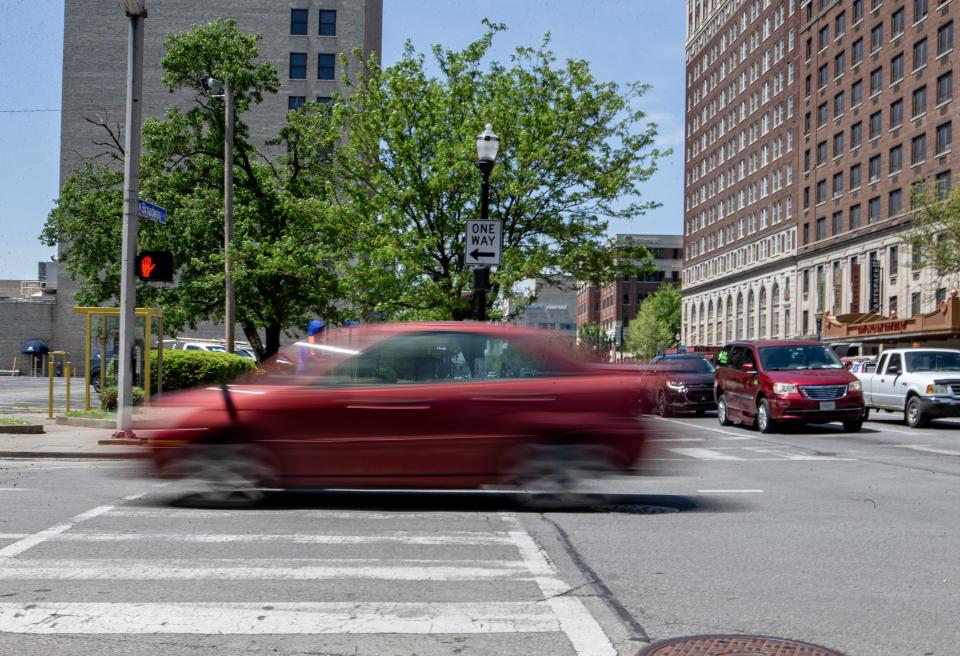
Cars traveling over posted speed limits also pose a danger to people walking in the neighborhood, Smith, the Second Street Neighborhood Association president, said.
“Even if you are at a corner where there is a signal for you to cross, it’s kind of crazy because people are not paying attention.”
District 6 Metro Councilman Phillip Baker, who represents the portion of Second and Third Street impacted by the two-way conversion plan, agreed with Smith, saying speeding is a common hazard.
“My hope is that when people slow down, it’s a safer community for kids, for seniors, for everybody,” he said.
Third Street resident Jeff Watts-Roy thinks speeding is a problem on his street, too. He said he once did an experiment where he pointed a radar gun from his house to the street, finding the average speed of a passing car to be 25 to 30 miles per hour over the speed limit of 35 miles per hour. Some cars even traveled above 100 miles per hour, he said.
“Since we started living here in 2007, there have been at least three accidents where cars ended up upside down,” said Watts-Roy, who is a member of the 1300 Association, a Third Street-based neighborhood group. “They were driving so fast, that when they hit a car on the side, they rolled their car over.”
What does data say about one-way and two-way streets?
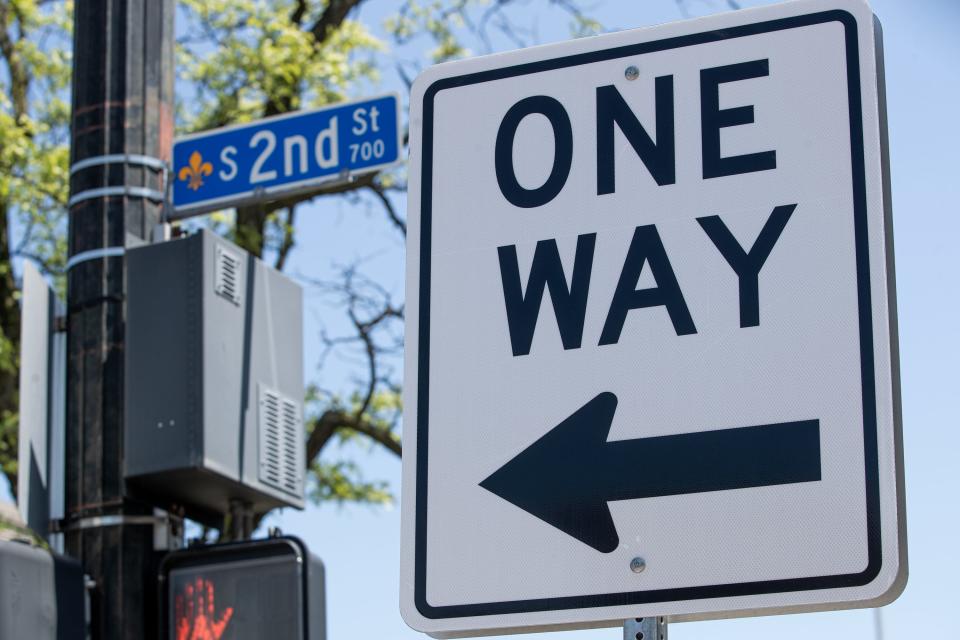
Reports show roadway fatalities are becoming increasingly problematic in Louisville. According to data from Vision Zero Louisville, a city-funded transportation safety initiative, 2023 was the city’s deadliest year for traffic deaths in the past seven years. Vision Zero recorded 136 traffic deaths in 2023, eight more than the previous year.
Vision Zero director Claire Yates said two-way conversions support the organization’s goal of zero traffic deaths by 2050.
“Vehicle speed and weight greatly determine injury severity in a crash, and two-way conversions discourage speeding by reducing the number of directional travel lanes,” Yates said in an email.
When Louisville experienced suburban growth in the mid-20th century, the city adopted one-way streets as a way for commuters to get in and out of downtown as quickly as possible, according to a 2009 study of Louisville’s one-way streets.
Patrick Piuma, director of the Urban Design Studio at the University of Louisville, said one-way streets can confuse drivers new to the city.
“It makes people have to drive farther, especially if they’re looking for a parking space or place to stop,” he said. “If you can’t find it, then you have to drive around several blocks to get back to where you were at again, as opposed to a two-way, where you can just stop anywhere.”
Conversions could have significant benefits not only for travelers, but daily commuters as well. A 2015 Louisville-based study authored by University of Louisville professor John Gilderbloom and William Riggs, a Louisville native with expertise in urban development, found that while two-way streets produce slower traffic flows, there are generally less accidents compared to one-way streets due to the decrease in speed.
In their study, Gilderbloom and Riggs compared collision data from Second and Third streets to data from Brook and First streets, which underwent two-way street conversions in 2011. In the year after Brook and First streets were reconfigured, the rate of collisions decreased by 36% and 60%, respectively, compared to the five years prior to the conversion. The authors stated the two-way traffic flow on Brook and First streets was “perceived as slower and beneficial.”
To safely ease traffic jams on two-way streets, Piuma said traffic on a two-way street could flow better if traffic lights are replaced with stop signs.
“It doesn’t seem like it makes sense, but when there’s not a lot of volume, or if you’re sitting there waiting for the light to turn green, when you could just pulled up to a stop sign and then on to the next one,” Piuma said. “(Stop signs are) more reliable for pedestrians to understand what’s happening at the intersection.”
Do residents approve of proposed two-way projects?
Watts-Roy believes two-ways are a proven way to slow down traffic, but he thinks there may still be some speeders on Third Street.
“Even with the two-way, you’re still gonna have people who have always (sped), and they’re going to keep doing it,” he said.
The planned three-year timeline for a two-way conversion on Second Street is not much of an issue for Smith, who said she is willing to wait for something she believes will make her neighborhood better.
“My background is in project management. I understand how the process takes time,” Smith said. “Once you have the funding earmarked, you have to spend your due diligence of gathering information and getting a design together that is going to meet the majority of everybody’s needs with the funding that you have.”
Here’s a look at all projects that will convert one-way streets to two-way:
Second and Third streets
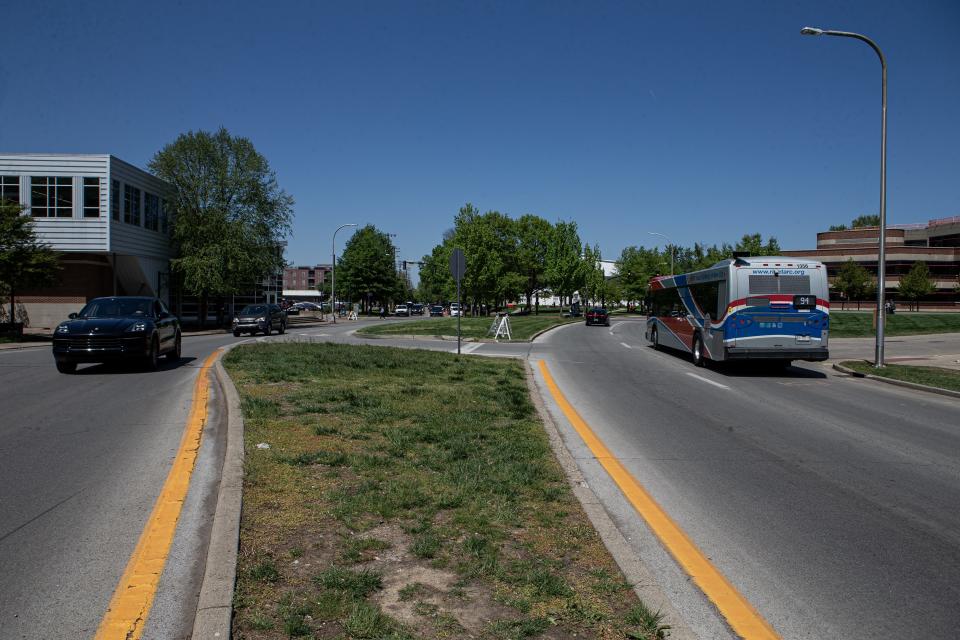
In 2023, Metro Government applied for federal funding from the Safe Streets and Roads for All grant program. Created by the Infrastructure Investment and Jobs Act of 2021, it will provide up to $5 billion in funding for projects across the country from 2022-26.
Smith wrote a letter to U.S. Transportation Secretary Pete Buttigieg, asking him to accept Louisville’s application for grant money. Louisville Mayor Craig Greenberg and Kentucky Gov. Andy Beshear did the same.
The work paid off. In December, the city announced it would receive up to $7.5 million from the Safe Streets program. Construction on Second and Third streets is estimated to begin in the fourth quarter of 2026 and conclude in the third quarter of 2027.
The changes to these two streets could reduce the annual number of crashes by 68 and the number of fatal crashes by 14, according to the grant application the city submitted to the federal government.
Much of the cost for the two-way conversions at Second and Third streets — $7.5 million — will be covered through the federal grant Louisville Metro received last year. City and state officials each pledged to allocate $2.5 million for the project, bringing the total funding to $12.5 million, the Courier Journal previously reported.
Chestnut Street and Muhammad Ali Boulevard
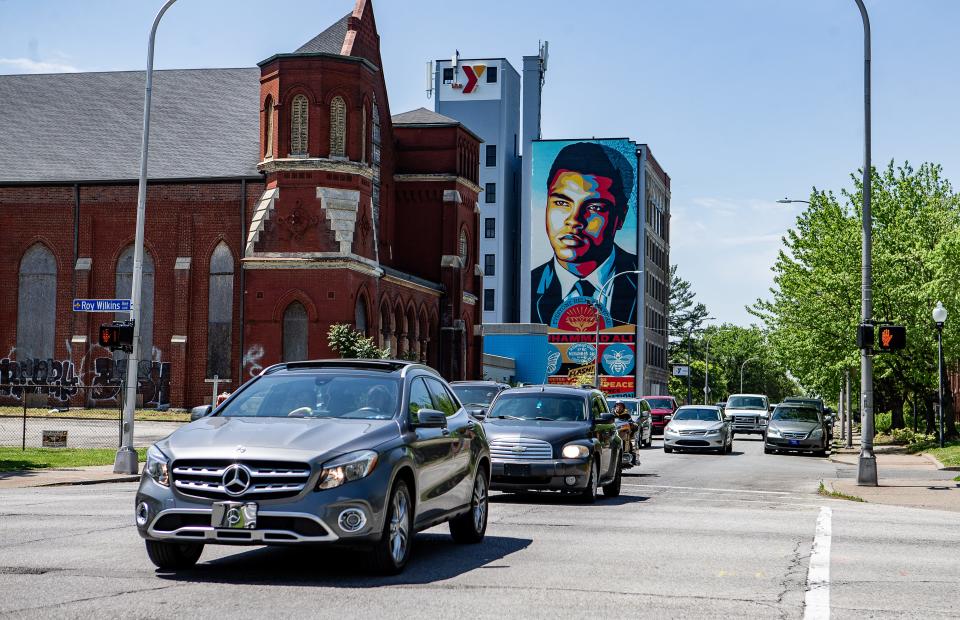
Louisville Metro plans to turn Chestnut Street (which becomes River Park Drive at 28th Street) and Muhammad Ali Boulevard into two-ways from Ninth Street to their ends in the Shawnee neighborhood. Construction on these projects, scheduled to begin in 2025, will take around a year to finish, according to Louisville Metro.
Former Mayor Greg Fischer’s administration initially rolled out the Ali-Chestnut two-way conversions and the Reimagine 9th Street project separately. The projects were later tacked on to Reimagine 9th Street to secure funding from the U.S. Department of Transportation’s RAISE program, which aims to “ensure that taxpayers are getting the highest value for every dollar invested” for major transportation construction or repair projects. Louisville received about $15.6 million in RAISE funding in August 2022.
In addition to federal funding, the city pledged to invest $5 million in Reimagine 9th Street, while an additional $4 million will come from “other federal sources,” according to Louisville Metro’s website.
Logan and Shelby streets
A two-way proposal for Logan and Shelby streets, includes more than a new-look road with a yellow-striped line. Crews plan to replace four traffic lights with stop signs and extend curbs to reduce the length of pedestrian crossings.
Construction on the project is expected to be completed sometime during summer 2024, Kentucky Transportation Cabinet spokesperson Morgan Woodrum said.
Construction of the $2.9 million conversion of Logan and Shelby streets was awarded by the state transportation cabinet to Louisville-based Flynn Brothers Contracting.
Main Street
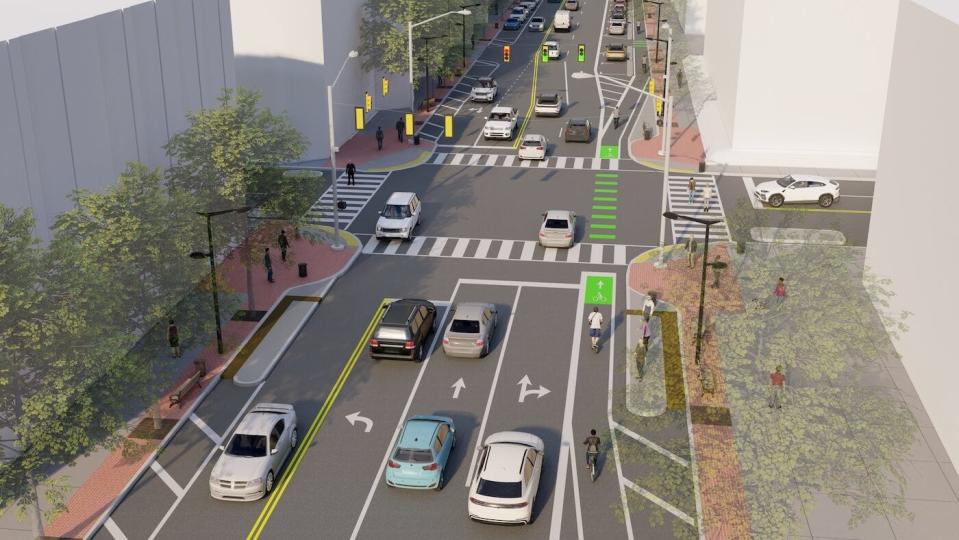
Main Street is also set for a two-way conversion. Work on the “East Phase” of the project, from Wenzel to Second streets, could begin in “late 2024,” according to the Kentucky Transportation Cabinet.
The conversion would eventually extend about three miles to 22nd Street and include new several new features, such as designated left-turn lanes, a bike lane, crosswalks and traffic signals to accommodate the redesigned traffic flow.
As of March 29, the Kentucky Transportation Cabinet was determining how much the Main Street project will cost, Woodrum said.
Reach reporter Leo Bertucci at lbertucci@courierjournal.com or @leober2chee on X, formerly known as Twitter
This article originally appeared on Louisville Courier Journal: Louisville residents support two-way street projects in development
EMEA Tribune is not involved in this news article, it is taken from our partners and or from the News Agencies. Copyright and Credit go to the News Agencies, email news@emeatribune.com Follow our WhatsApp verified Channel









